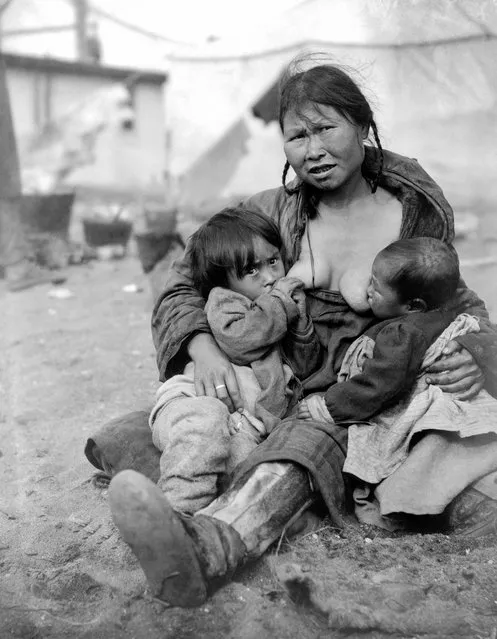
An Inuit Eskimo woman breast-feeding two babies, Alaska, 1904. (Photo by F.H. Nowell/Underwood Archives/Getty Images)
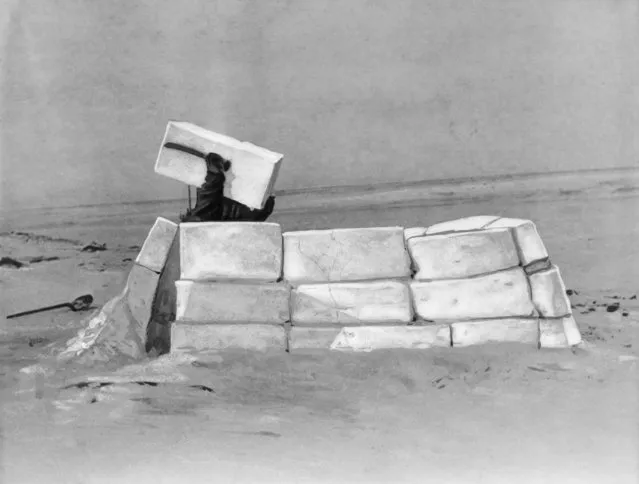
Picture shows an Eskimo building an igloo. Undated photograph. (Photo by Bettmann Collection)
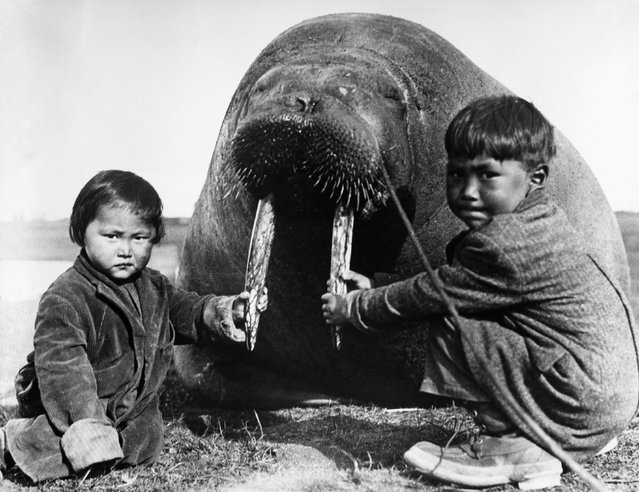
Two Inuit children at Point Barrow, Alaska, holding the tusks of a large walrus, probably killed for food, circa 1930. (Photo by General Photographic Agency/Getty Images)
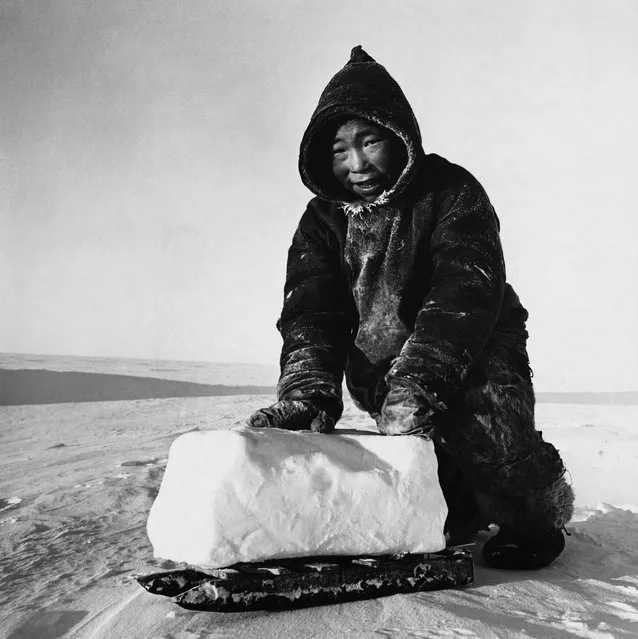
A young inhabitant of the Melville Peninsula uses a small sled to transport a block of frozen snow home to melt for tea. (Photo by Hulton-Deutsch Collection/Corbis via Getty Images)
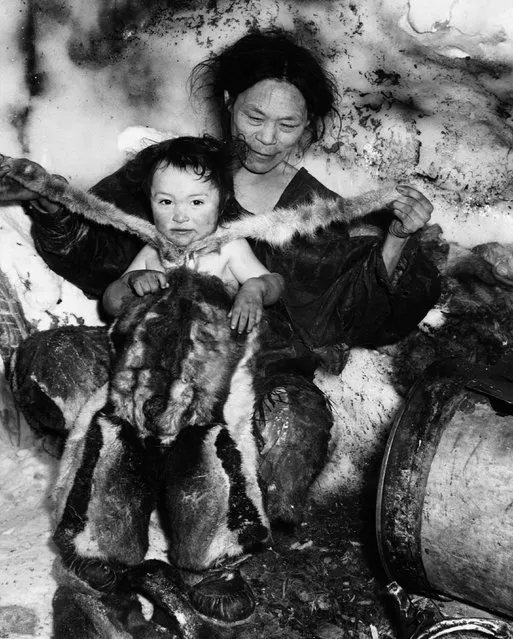
An Inuit mother dresses her young child in a fur snowsuit. (Photo by Hulton-Deutsch Collection/Corbis via Getty Images)
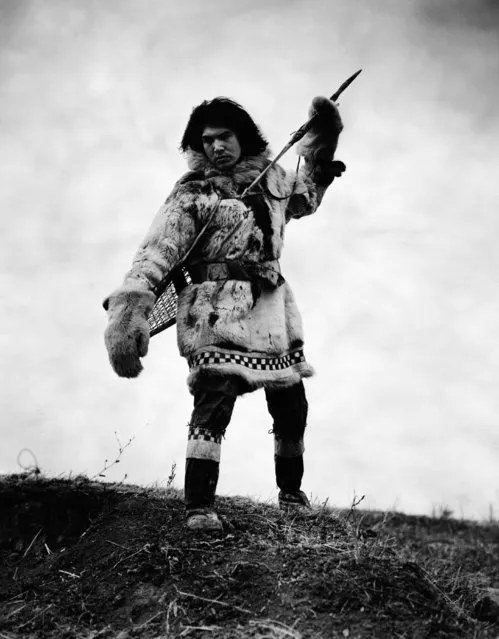
Eskimo with spear. Still from early documentary “Igloo” directed by Ewing Scott, 1932. (Photo by Bettmann Collection)
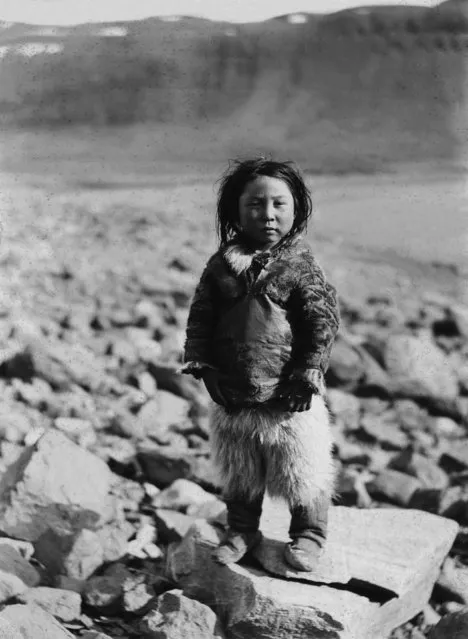
Scene is in Greenland, off Canada and at Cape York, with a young native, circa 1927. (Photo by Bettmann Collection)
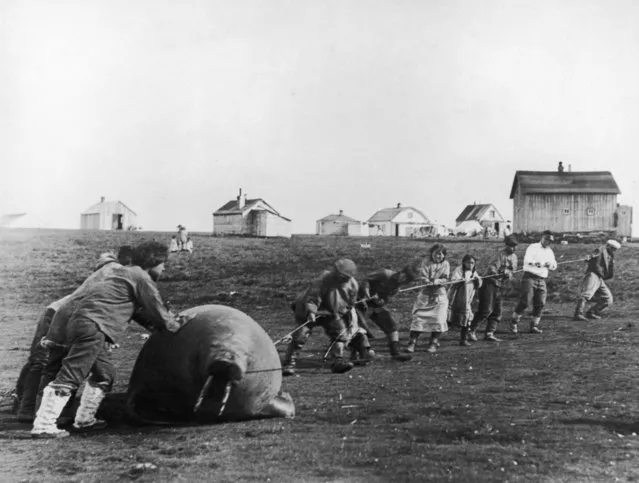
A group of Inuit villagers dragging home a walrus, Alaska, circa 1930. (Photo by Hulton Archive/Getty Images)
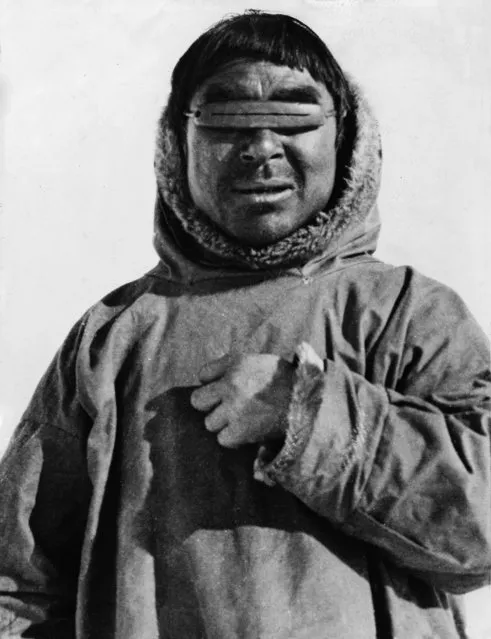
Inuit (Eskimo) with snow goggles, 20th century. Yellowknife, Prince Of Wales Northern Heritage Centre (Photo by DeAgostini/Getty Images)
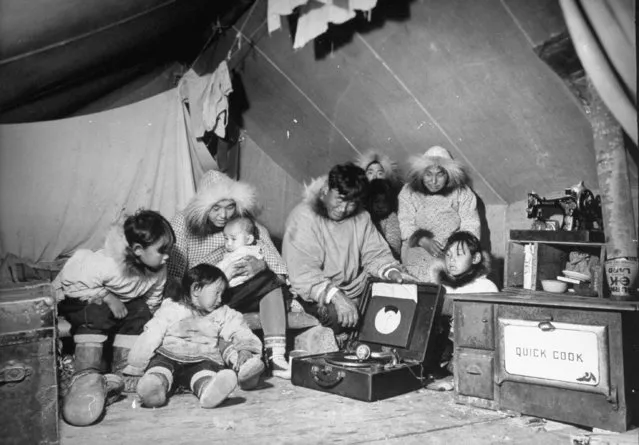
Eskimo family admiring their modern conveniences, a victrola (C), a sewing machine & a stove (R) as they commune in their tent, October 1937. (Photo by Margaret Bourke-White/The LIFE Picture Collection/Getty Images)

Inuit Woman Wearing Traditional Dress. Eskimo woman wears the tall, floppy hood of her tribe. Eskimos are more properly referred to as Inuits. The term Eskimo is considered derogatory. (Photo by Hulton-Deutsch Collection/Corbis via Getty Images)
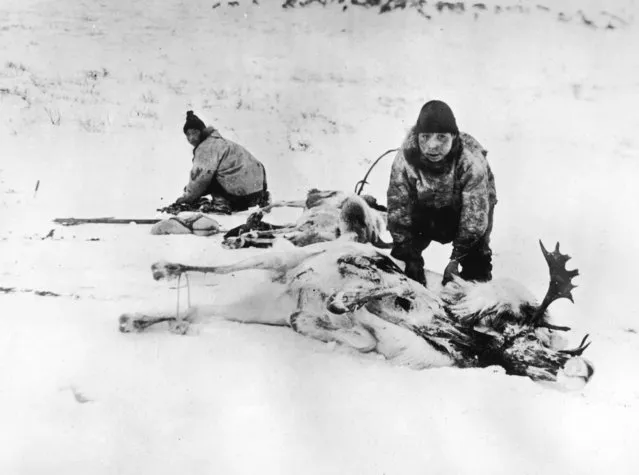
Two Inuit hunters in Canada strip the meat from a pair of reindeer carcasses, March 1924. (Photo by Topical Press Agency/Hulton Archive/Getty Images)
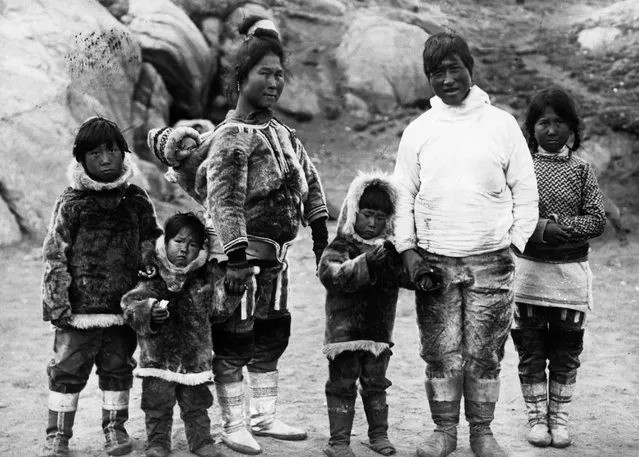
A Greenlandic couple with their children. (Photo by Hulton-Deutsch Collection/Corbis via Getty Images)
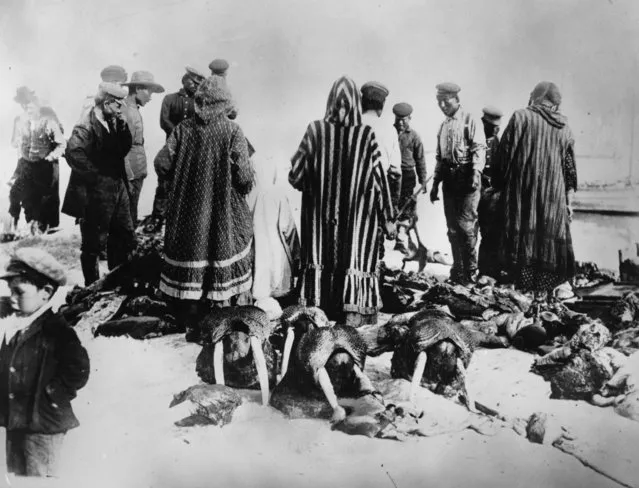
A scene at an Inuit blubber market in Canada, with dead walruses, March 1924. (Photo by Topical Press Agency/Getty Images)
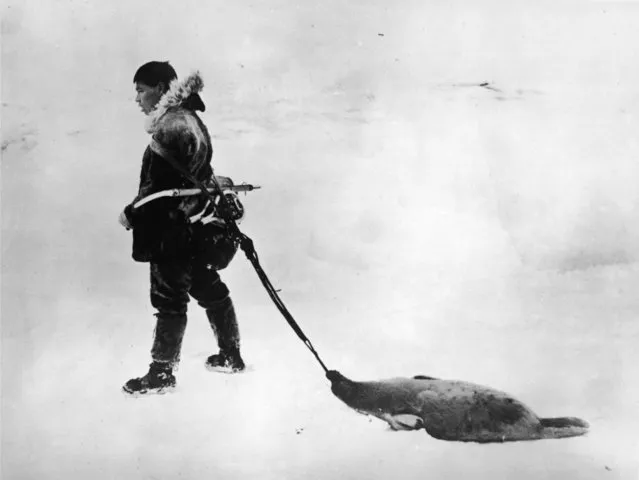
An Inuit hunter in Canada drags the carcass of a seal behind him, March 1924. (Photo by Topical Press Agency/Hulton Archive/Getty Images)

People, Alaska, circa 1920. Eskimo children helping their mother on washing day. (Photo by Popperfoto/Getty Images)
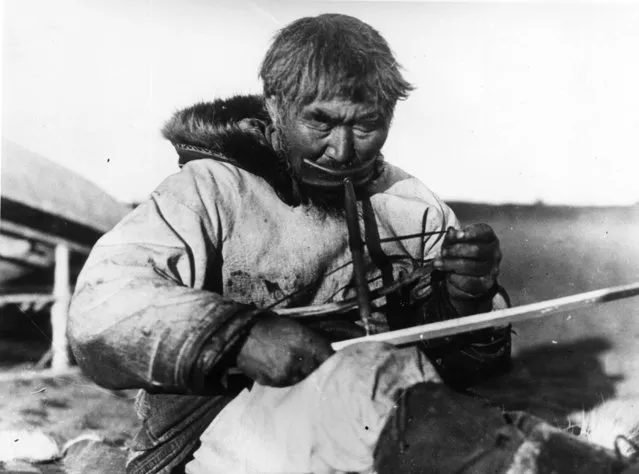
An Inuit carpenter at work using a traditional bow drill which he holds with his mouth and turns with a string, circa 1910. (Photo by Earl Rossman/General Photographic Agency/Getty Images)
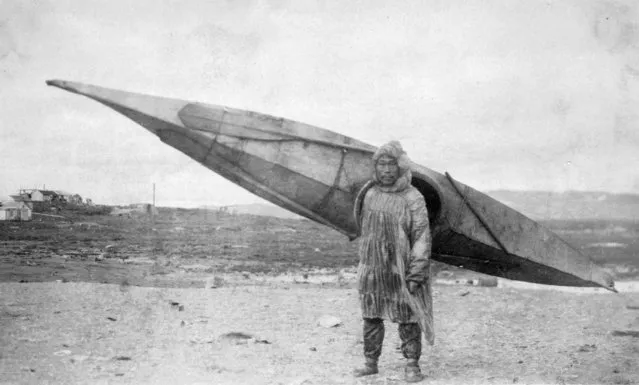
Eskimo (inuit) carrying a kayak, circa 1900. (Photo by APIC/Getty Images)

Eskimo Family in Home, Portait, Fort Magnesia, Cape Sabine, Ellsmere Island, Canada, circa 1900. (Photo by: Universal History Archive/UIG via Getty Images)
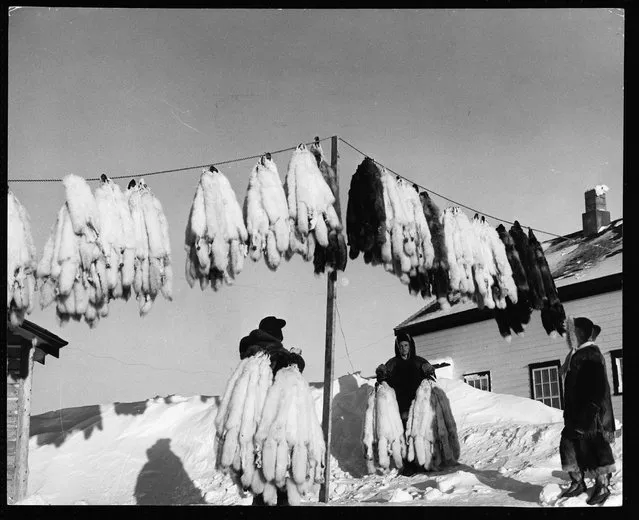
Hudson Bay fur traders hang fox pelts out to air on a clothesline, at Eskimo Point. (Photo by Hulton-Deutsch Collection/Corbis via Getty Images)
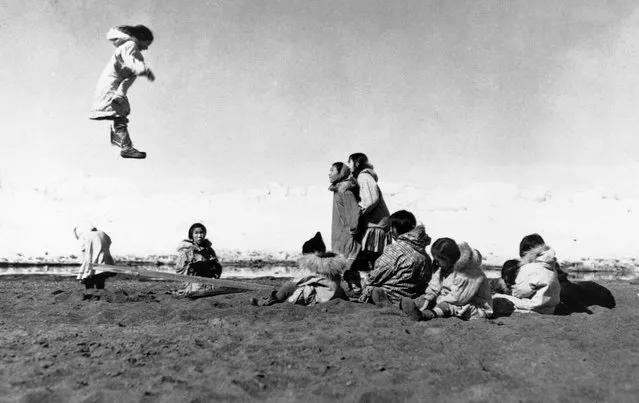
The Eskimo seesaw is much more rugged then the familiar version. (Photo by Corbis via Getty Images)
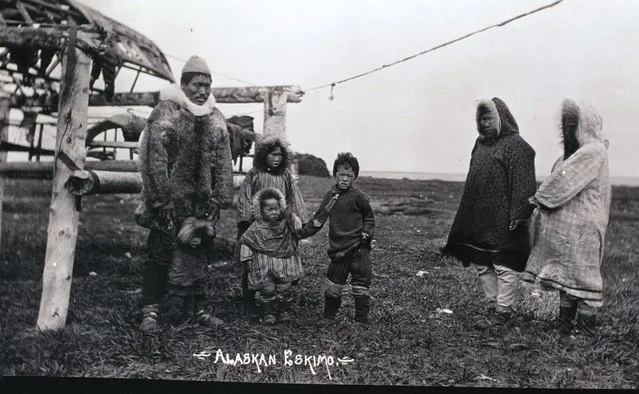
An Eskimo family wear heavy parkas to keep themselves warm in the cold Alaska climate, circa 1910. (Photo by Michael Maslan/Corbis/VCG via Getty Images)
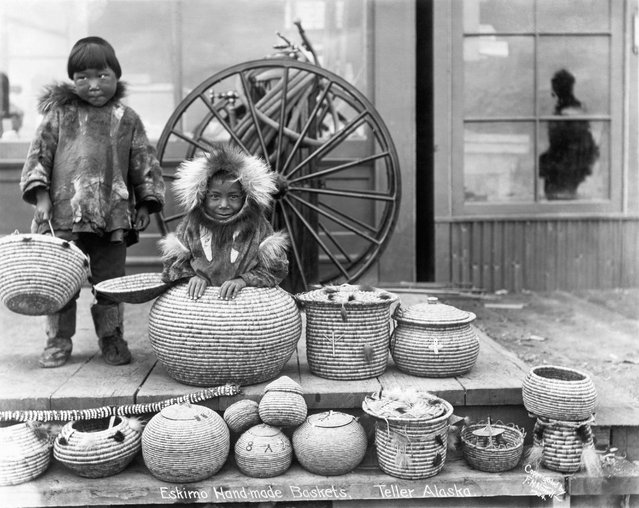
The Klondike Goldrush. Eskimo handmade baskets, Teller, Alaska, with two native Eskimo boys, 1904. (Photo by F. H. Nowell/Bettmann Collection)
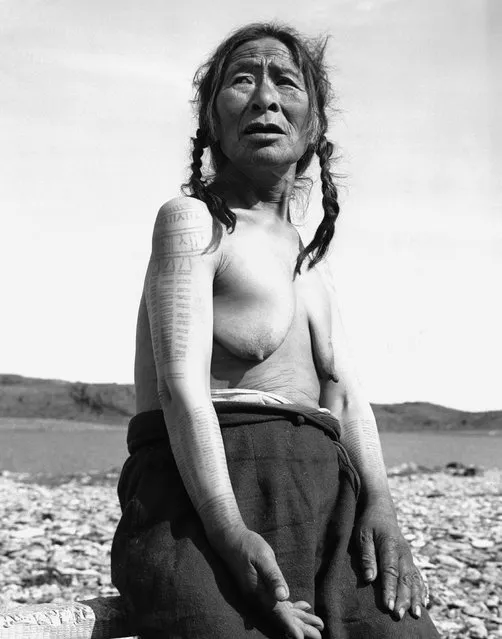
Portrait of an older Eskimo woman, a member of the Innuit tribe. (Photo by Hulton-Deutsch Collection/Corbis via Getty Images)

An Eskimo family living near the Mackenzie River, Canada. (Photo by Bettmann Collection)

An Eskimo group of men, women, and children dressed in fur coats in Port Clarence, Alaska in 1894. | Location: Port Clarence, Alaska. (Photo by Corbis via Getty Images)
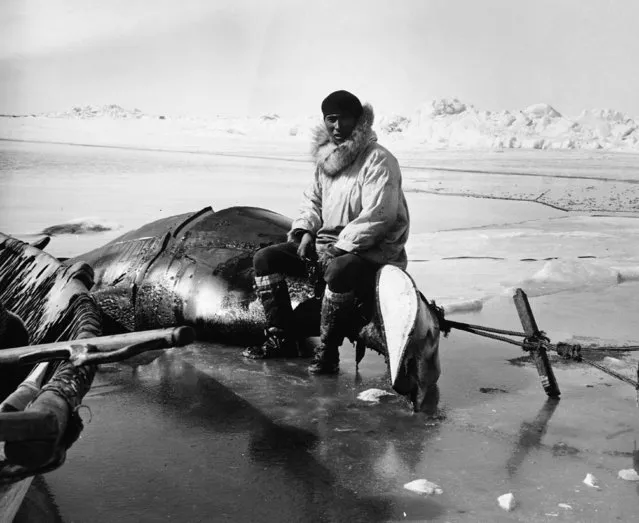
A Point Hope hunter sits on the carcass of a whale which has been hauled onto the ice to be butchered. (Photo by Hulton-Deutsch Collection/Corbis via Getty Images)
04 Feb 2017 01:02:00,
post received
0 comments
